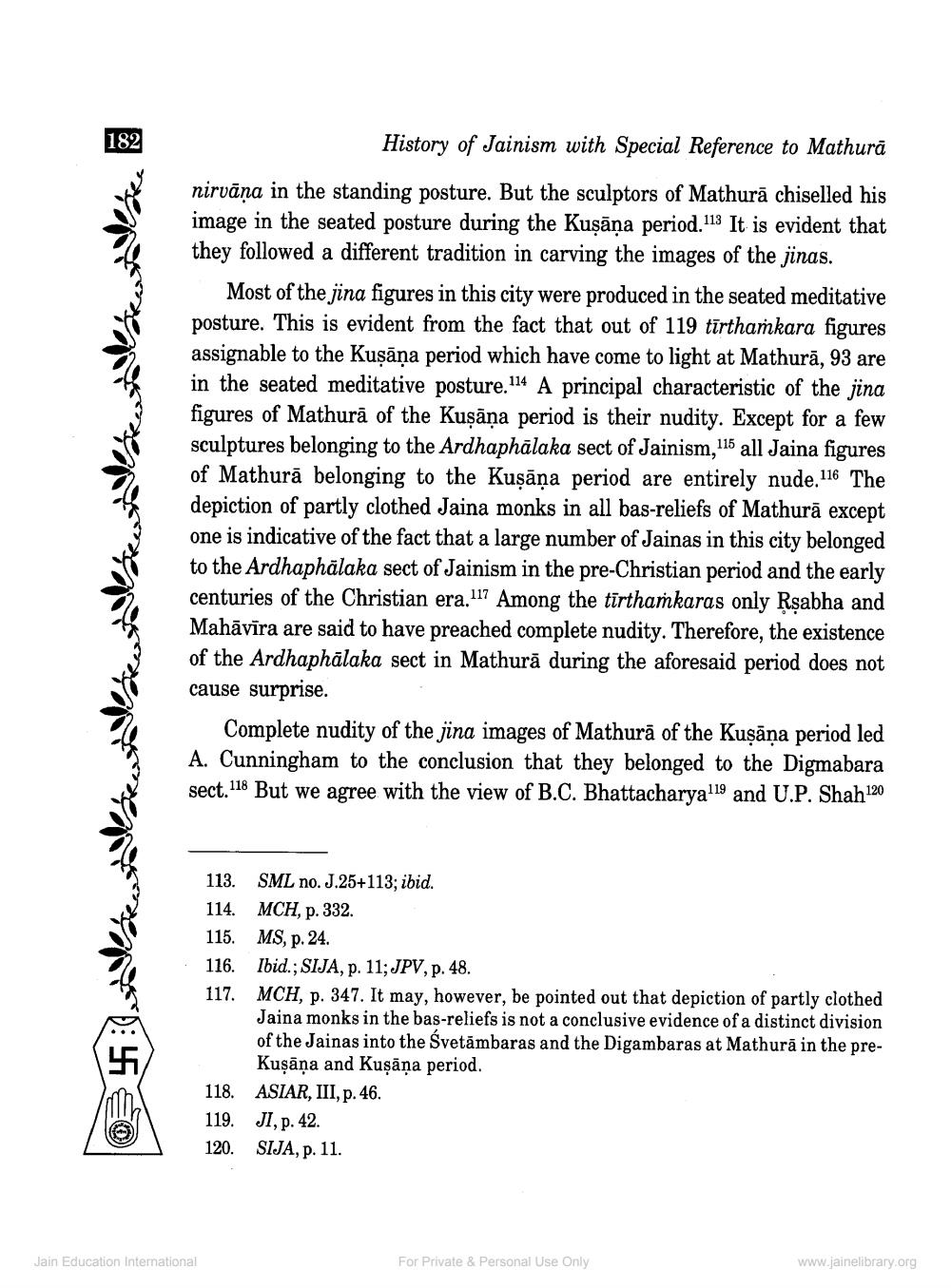________________
182
History of Jainism with Special Reference to Mathurā
nirvana in the standing posture. But the sculptors of Mathurā chiselled his image in the seated posture during the Kusāna period. 113 It is evident that they followed a different tradition in carving the images of the jinas.
Most of the jina figures in this city were produced in the seated meditative posture. This is evident from the fact that out of 119 tīrthařkara figures assignable to the Kusāna period which have come to light at Mathurā, 93 are in the seated meditative posture.114 A principal characteristic of the jina figures of Mathurā of the Kusāna period is their nudity. Except for a few sculptures belonging to the Ardhaphālaka sect of Jainism, 115 all Jaina figures of Mathurā belonging to the Kuşāna period are entirely nude.116 The depiction of partly clothed Jaina monks in all bas-reliefs of Mathurā except one is indicative of the fact that a large number of Jainas in this city belonged to the Ardhaphālaka sect of Jainism in the pre-Christian period and the early centuries of the Christian era. 117 Among the tīrthamkaras only Rsabha and Mahāvīra are said to have preached complete nudity. Therefore, the existence of the Ardhaphālaka sect in Mathurā during the aforesaid period does not cause surprise.
Complete nudity of the jina images of Mathurā of the Kuşāņa period led A. Cunningham to the conclusion that they belonged to the Digmabara sect.118 But we agree with the view of B.C. Bhattacharyal19 and U.P. Shah 120
113. SML no. J.25+113; ibid. 114. MCH, p. 332. 115. MS, p. 24. 116. Ibid.; SIJA, p. 11; JPV, p. 48. 117. MCH, p. 347. It may, however, be pointed out that depiction of partly clothed
Jaina monks in the bas-reliefs is not a conclusive evidence of a distinct division of the Jainas into the Svetāmbaras and the Digambaras at Mathurā in the pre
Kuşāņa and Kuşāņa period. 118. ASIAR, III, p. 46. 119. JI, p. 42. 120. SIJA, p. 11.
Jain Education International
For Private & Personal Use Only
www.jainelibrary.org




